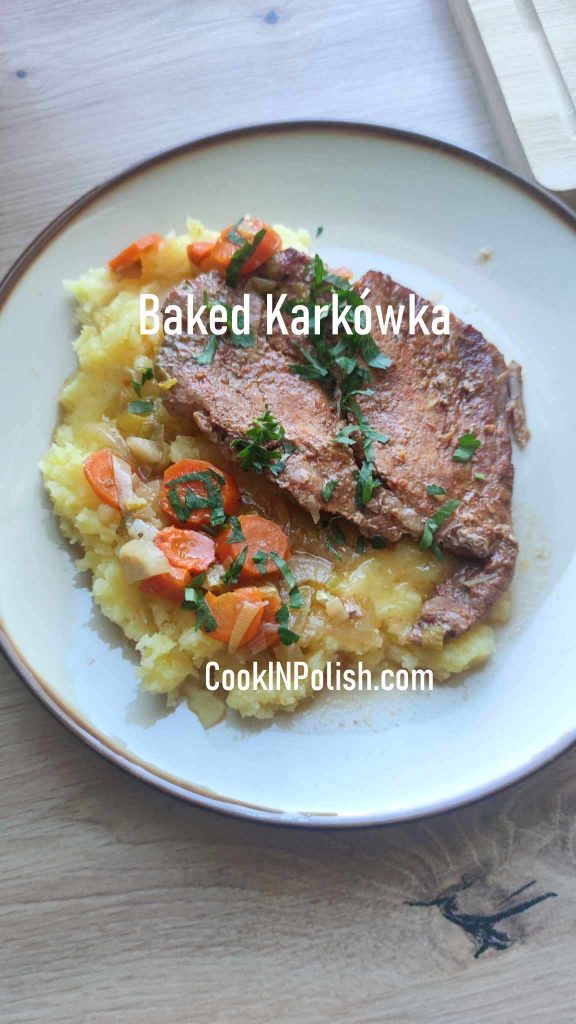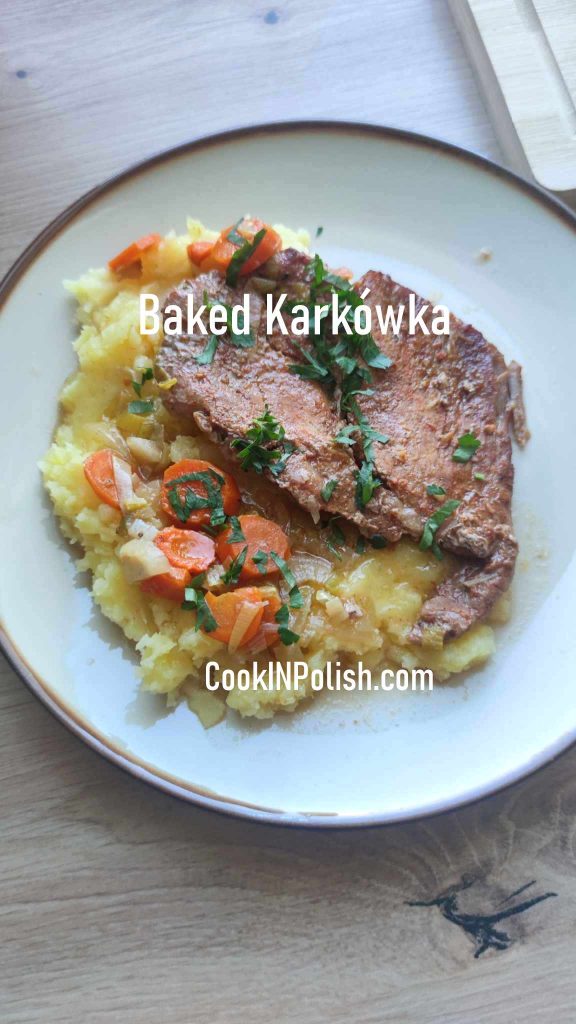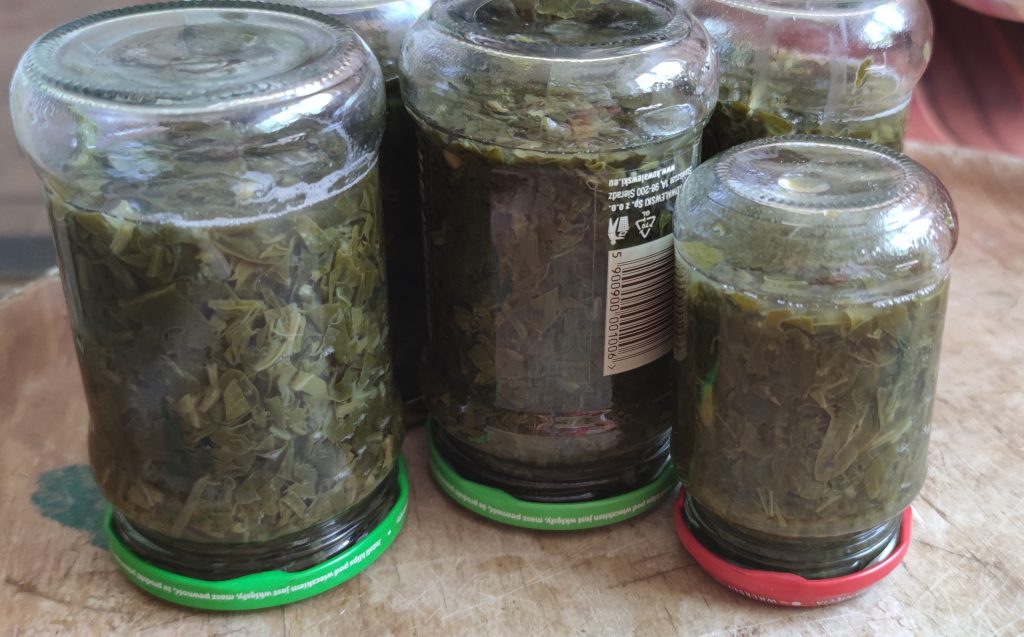A Taste of Comfort: Oven-Baked Pork Neck on a Bed of Vegetables
Polish cuisine is all about comfort, depth of flavor, and making the most of simple ingredients. It’s a cuisine born of cold winters, family gatherings, and tradition passed down through generations. Today, I’m sharing one of those heartwarming dishes that captures the essence of Polish home cooking: Baked Pork Neck – Karkówka pieczona w brytfance—oven-baked pork neck (pork shoulder, collar, pork steak), marinated and roasted on a soft bed of vegetables.
It’s the kind of meal you make when you want your home to smell like Sunday.

Baked Pork Neck on a Vegetable Bed (Karkówka pieczona na warzywach)
Ingredients:
For the marinade:
- 3–4 tbsp vegetable oil
- 1½ tsp salt
- 1 tsp black pepper
- 2 tsp sweet paprika
- 1 tsp dried garlic
- ½ tsp chili powder (or to taste)
For the pork and vegetables:
- 1–1.5 kg pork neck (boneless), sliced into thick pieces
- 2 large leeks (white and light green parts), sliced
- 2 carrots, peeled and sliced
- 1 parsley root or parsnip, peeled and sliced
- 1 large onion, chopped
- 500 ml broth (see note below)
Here is a short video on how I make it:
Instructions:
- Marinate the Pork:
Slice the pork neck into thick slices (about 2–3 cm). Mix all marinade ingredients together and coat the slices thoroughly. Cover and refrigerate overnight (or at least for a few hours). - Prepare the Vegetable Bed:
In a large roasting dish (brytfanka), arrange the leeks, carrots, parsley root, and onion evenly. These vegetables will form a deliciously aromatic bed for the meat. - Assemble and Roast:
Lay the marinated pork slices over the vegetables. Gently pour in the broth around the sides of the dish—try not to pour it directly on the meat. - Bake:
Cover the dish with a lid and bake in a preheated oven at 180°C (350°F) for about 2 hours. In the final 30 minutes, remove the cover to allow the meat to brown and the flavors to deepen. - Serve:
Serve Baked Pork Neck hot, ideally with mashed potatoes or fresh bread. A tangy salad, like sliced cucumbers in sour cream, would make a perfect side.
A Note on the Broth
In this recipe, I used a very Polish shortcut: two bouillon cubes dissolved in half a liter of hot water. It’s fast, it’s practical, and yes—it’s not the most gourmet solution. But let’s be honest: not every day is made for simmering homemade stock.
Sometimes taking a shortcut means you have time to sit down with a cup of tea, read a chapter of your book, or build Lego towers with your kids. That’s worth something too.
So if you’re using bouillon cubes, don’t let anyone shame you for it. Cooking should nourish, not stress. And if you do have the time and energy for homemade broth—go for it! But either way, you’re doing great.

If you liked my posts and tried my recipes, you can consider buying me a coffee. Or rather I should say: you can buy me a flour for Pierogi, cabbage for Gołąbki and beets for Barszcz:) This would help me to cook more and publish more delicious recipes for You. www.buymeacoffee.com/cookinpolish.
Comment on the post if you have questions, other ideas on the recipe or just enjoyed reading. I would be happy to see your thoughts on my posts!
Thanks for liking and sharing my recipes to your friends – it helps to develop my blog!
Polish food recipes, sentimental Polish cuisine, only tried and true recipes.



